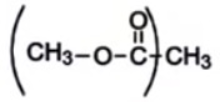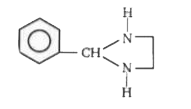which of the following contain most acidic hydrogen



NONE OF THESE
To determine which of the given compounds contains the most acidic hydrogen, we need to analyze the acidity of the hydrogen atoms in each compound based on their ability to donate protons (H⁺) and the stability of the resulting conjugate anions.
1. Identify the Compounds:
- Option 1: CH₃O (Methanol)
- Option 2: CH₃COCH₃ (Acetone)
- Option 3: CH₃C≡CH (Propyne)
2. Understand Acidity:
- The acidity of a hydrogen atom is determined by how easily it can be removed as a proton (H⁺). The more stable the conjugate base (the anion formed after losing H⁺), the more acidic the hydrogen.
3. Analyze Each Compound:
- Option 1 (Methanol): When the hydrogen is removed, it forms CH₃O⁻ (methoxide ion). The negative charge is on oxygen, which can stabilize the charge through resonance, but the overall stability is moderate.
- Option 2 (Acetone): When the hydrogen is removed, it forms CH₃C(=O)CH₂⁻ (the conjugate base). The negative charge can be stabilized by resonance with the carbonyl group (C=O), making it more stable compared to methoxide.
- Option 3 (Propyne): When the hydrogen is removed, it forms CH₃C≡C⁻ (the conjugate base). There is no resonance stabilization for this anion, making it less stable than the conjugate bases of the other two compounds.
4. Compare the Stability of Conjugate Bases:
- Methoxide (CH₃O⁻): Moderate stability due to resonance.
- Acetone Conjugate Base (CH₃C(=O)CH₂⁻): High stability due to resonance with the carbonyl group.
- Propyne Conjugate Base (CH₃C≡C⁻): Least stability due to lack of resonance.
5. Conclusion:
- Since the conjugate base of acetone (Option 2) is the most stable due to resonance stabilization with the carbonyl group, acetone has the most acidic hydrogen among the three compounds.
Final Answer:
The compound that contains the most acidic hydrogen is acetone (CH₃COCH₃).
---
- Option 1: CH₃O (Methanol)
- Option 2: CH₃COCH₃ (Acetone)
- Option 3: CH₃C≡CH (Propyne)
- The acidity of a hydrogen atom is determined by how easily it can be removed as a proton (H⁺). The more stable the conjugate base (the anion formed after losing H⁺), the more acidic the hydrogen.
- Option 1 (Methanol): When the hydrogen is removed, it forms CH₃O⁻ (methoxide ion). The negative charge is on oxygen, which can stabilize the charge through resonance, but the overall stability is moderate.
- Option 2 (Acetone): When the hydrogen is removed, it forms CH₃C(=O)CH₂⁻ (the conjugate base). The negative charge can be stabilized by resonance with the carbonyl group (C=O), making it more stable compared to methoxide.
- Option 3 (Propyne): When the hydrogen is removed, it forms CH₃C≡C⁻ (the conjugate base). There is no resonance stabilization for this anion, making it less stable than the conjugate bases of the other two compounds.
- Methoxide (CH₃O⁻): Moderate stability due to resonance.
- Acetone Conjugate Base (CH₃C(=O)CH₂⁻): High stability due to resonance with the carbonyl group.
- Propyne Conjugate Base (CH₃C≡C⁻): Least stability due to lack of resonance.
- Since the conjugate base of acetone (Option 2) is the most stable due to resonance stabilization with the carbonyl group, acetone has the most acidic hydrogen among the three compounds.
The compound that contains the most acidic hydrogen is acetone (CH₃COCH₃).
Similar Questions
Knowledge Check
Which of the following has most acidic hydrogen?
ACH3−NO2BCH3−O∣∣C−HCH−C(NO2)3DPh3CHWhich of the following has the most acidic hydrogen?
A B
B C
C D
D
Which of the following compounds has most acidic hydrogen ?
A B
B C
C D
D
